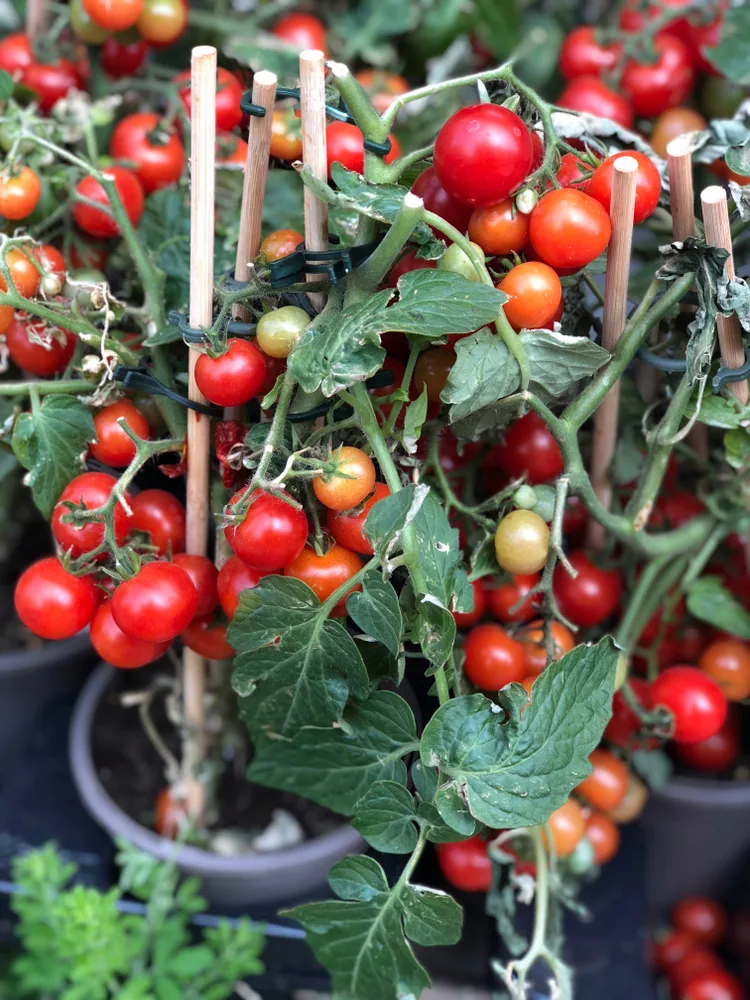
Tomato plants are pretty darn cool in that they can grow new roots anywhere along their stem.
If you’ve ever seen the knobby little bumps growing towards the bottom of your stems, these are just roots waiting to happen! The scientific name for them is root primordia.
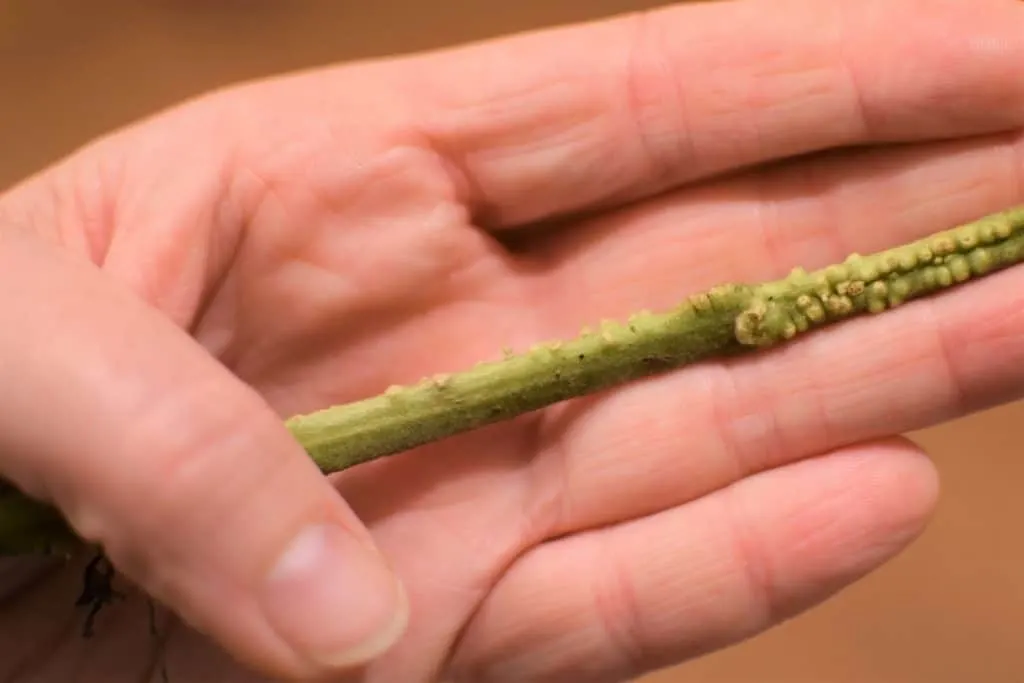
Generally speaking, they usually only show up if your tomato plants are stressed. And it’s for this reason that you should always plant your tomatoes deeply in the soil. Those new roots will lead to healthy abundant plants.
But we can use this neat trick to our advantage.
You can root tomato plants from leaf cuttings and stems.
I’ve even accidentally snapped a tomato plant in half once and salvaged the plant by poking the top half back in the dirt.
If you want to create a few more tomato plants with those suckers you pinched off, or if your friend has an unusual heirloom tomato you’d like to grow, it’s easy enough to clone a few.
Step 1 – Remove a tomato “sucker” or side shoot
Removing “suckers” is an important pruning technique for growing high yielding tomato plants. We discuss in detail the process of removing tomato suckers in this tutorial here.
Suckers are side shoots that emerge from the “crotch” of the main stem and a branch, as shown below.
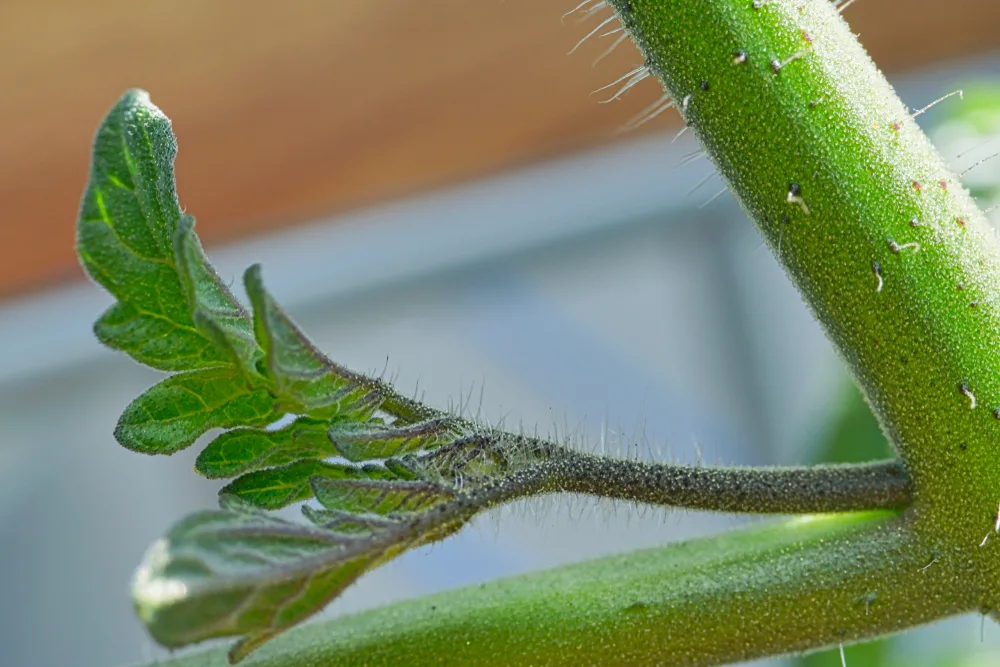
For the purposes of cloning your tomato plant from cuttings, you should allow your suckers to grow to 6 inches or more before pruning them – although for the purposes of growing healthy, productive tomato plants it is good practice to remove the suckers as soon as they emerge.
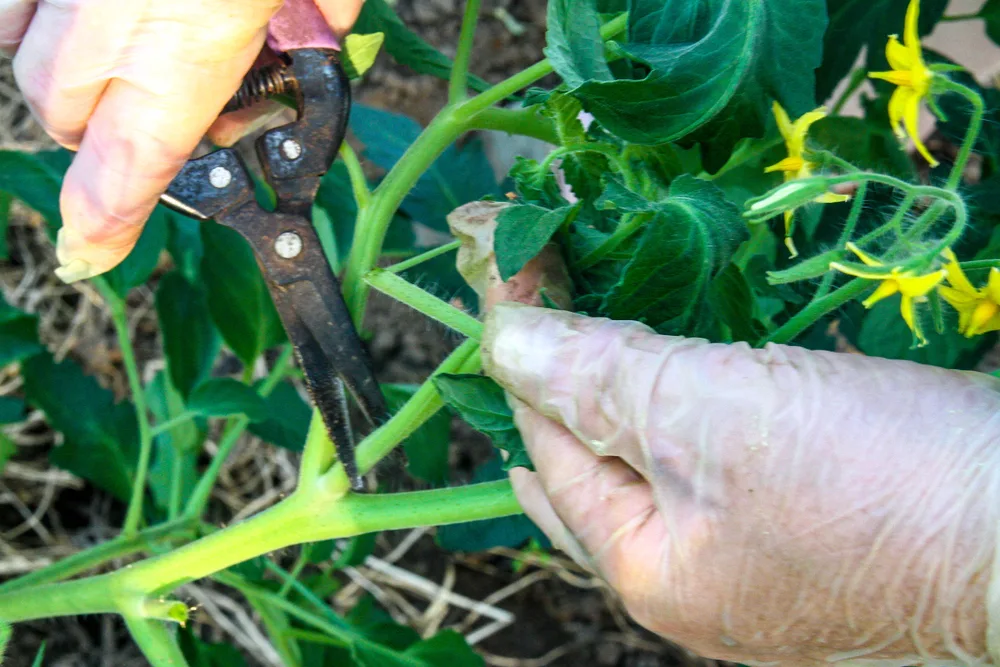
Step 2 – Root your tomato cutting
You can root your tomato cutting in water allowing the roots to form before placing into soil, or you can simply place your cutting straight in the dirt.
Water rooting or dirt rooting?
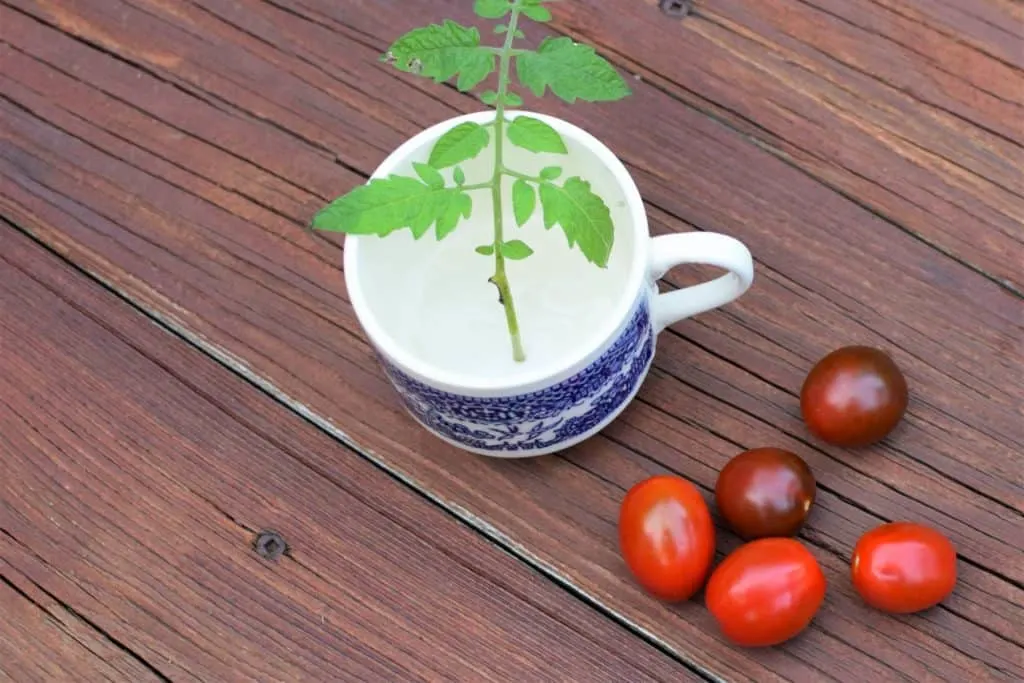
Getting a tomato plant to root in water is easy enough. You’ll need a cutting at least six inches long. Just put the stem end in a cup of water. Make sure the leaves aren’t in the water, or they will rot. Remove any leaves if necessary. You want only the very bottom of the stem to be submerged.
In about a week or two you’ll see new roots. At this time, you can transplant your fledgling plant into dirt.
Because tomato plants naturally generate roots along their stem, you can just as easily poke your cutting or your stem into a pot of dirt. Give your new tomato clone a proper watering and call it a day.
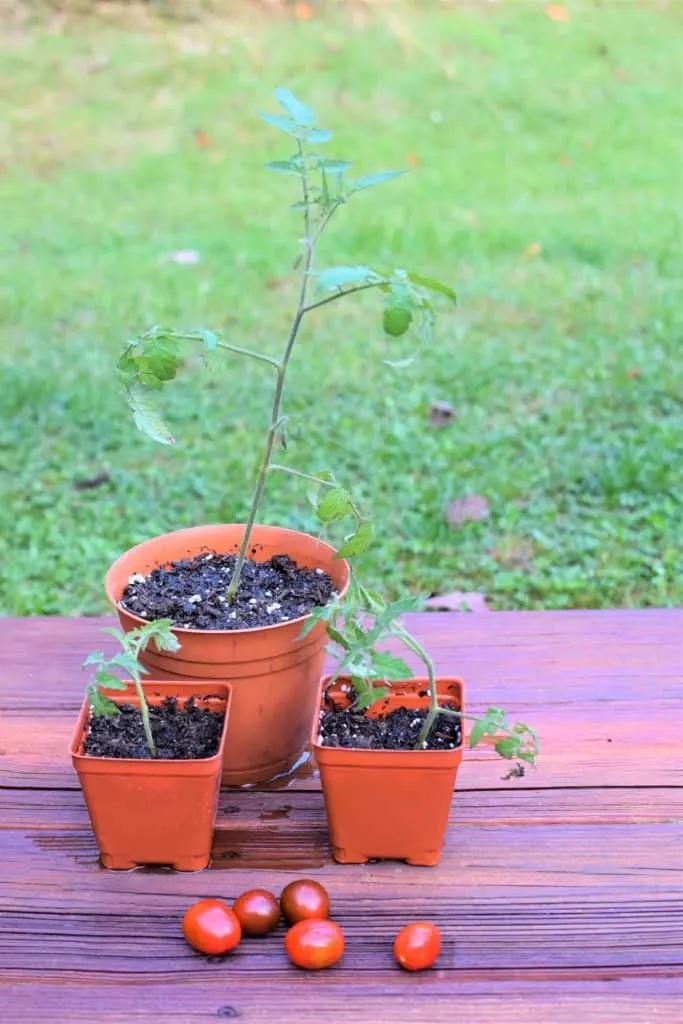
Either method works well, but I prefer the upfront approach of just planting straight in the dirt. It’s a lot less fuss.
If I’ve got an especially small cutting, then I might root it in water first. You’ll still want to plant it in a pot and give it a chance to get established before moving it into the garden.
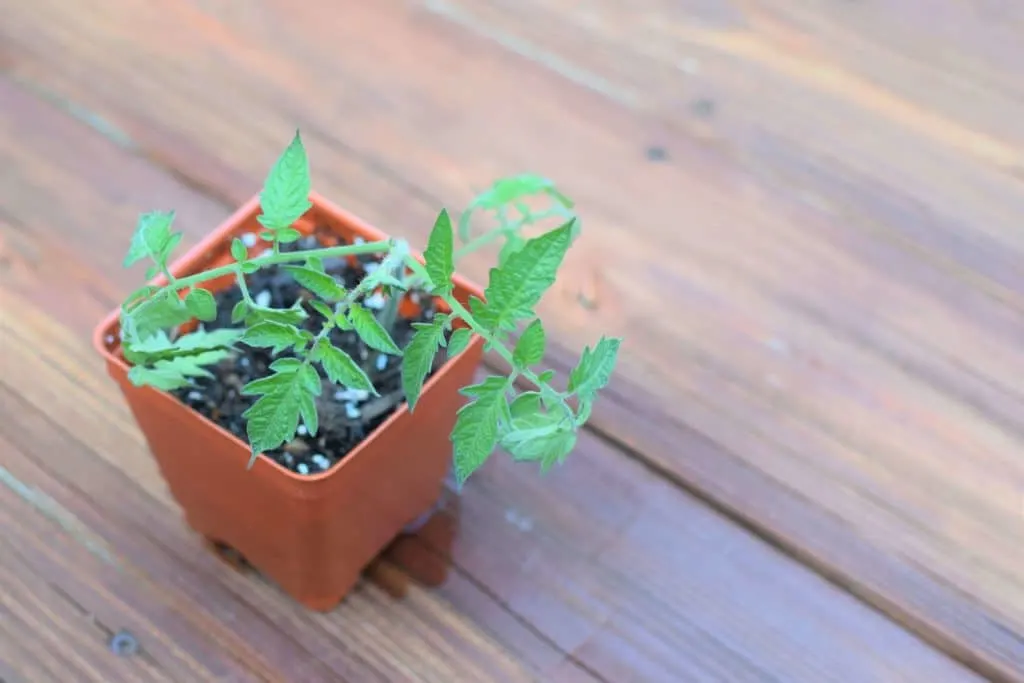
The beautiful thing about directly rooting in the dirt, especially if you are using a substantial sized stem, is that it takes much less time to get your new plant established and on its way to producing tomatoes.
Because tomatoes are self-pollinating, you can even take a few cuttings from your plants in the fall and grow tomatoes indoors. You’ll need to fertilize them more frequently. Give the stems with flowers a little shake once a day to help pollination, or try some of these other tomato hand pollination techniques, and you’ll be enjoying fresh tomatoes in the middle of the winter.
Read Next:

Get the famous Rural Sprout newsletter delivered to your inbox.
Including Sunday ramblings from our editor, Tracey, as well as “What’s Up Wednesday” our roundup of what’s in season and new article updates and alerts.


